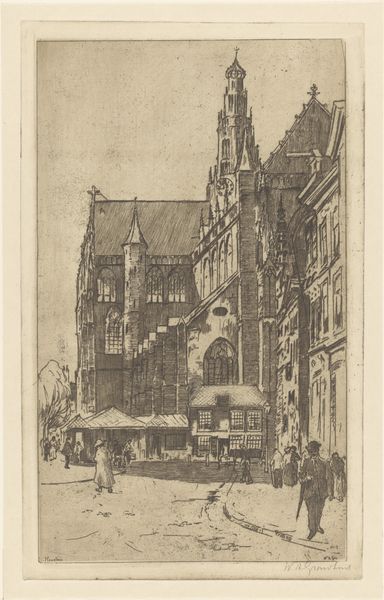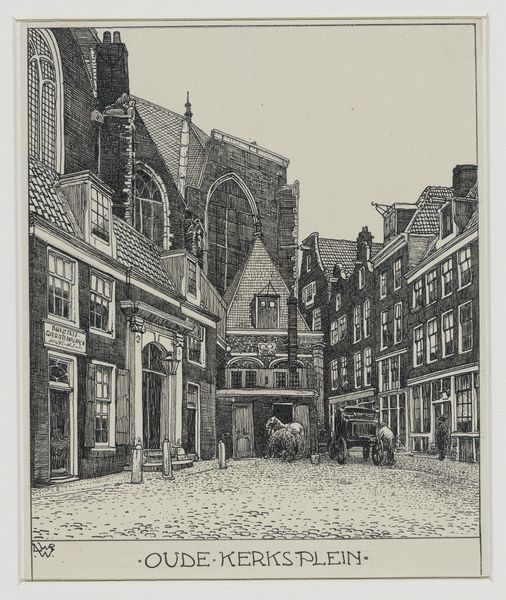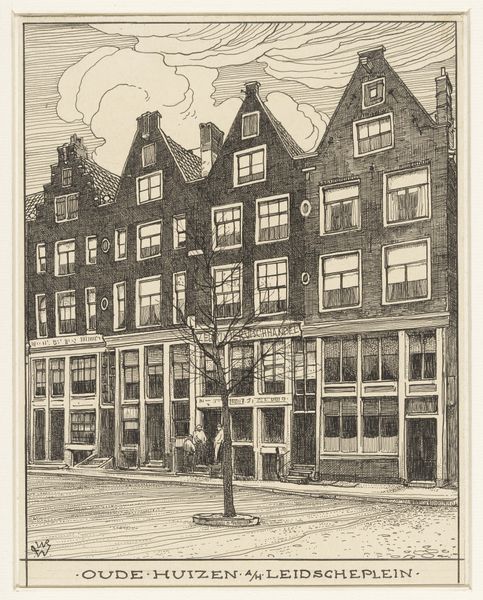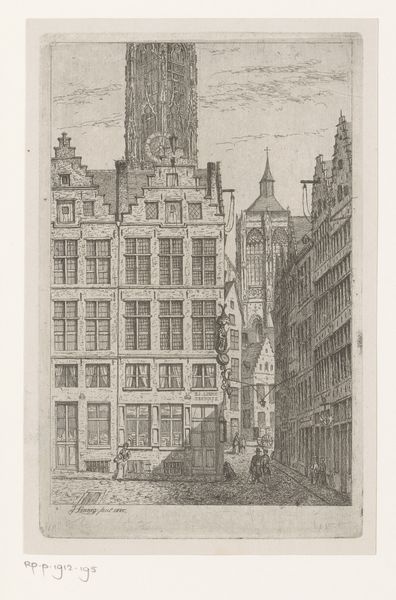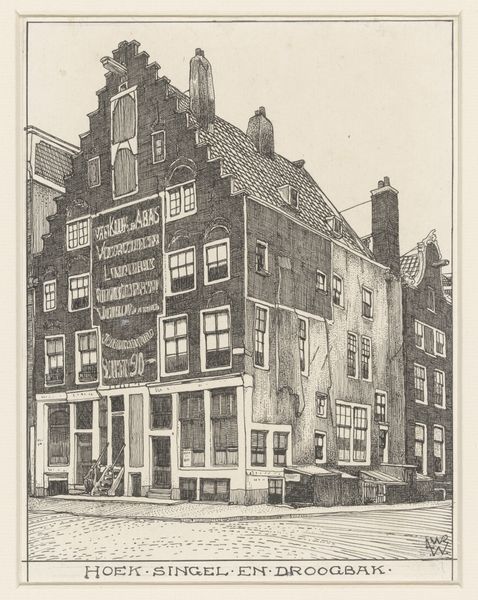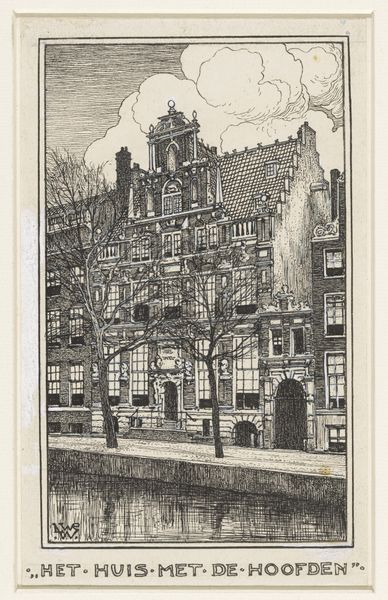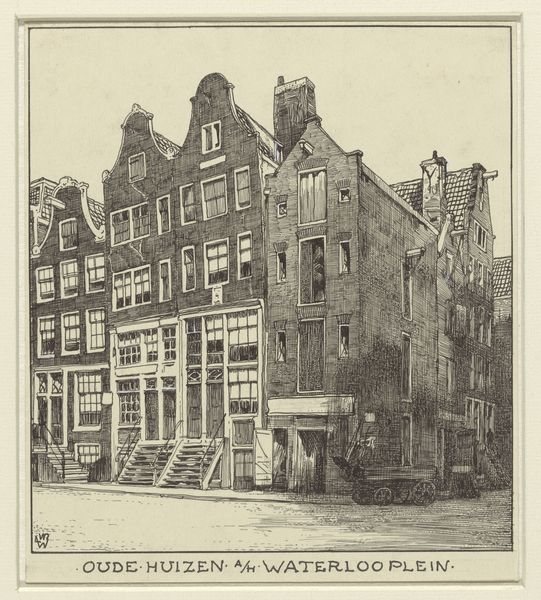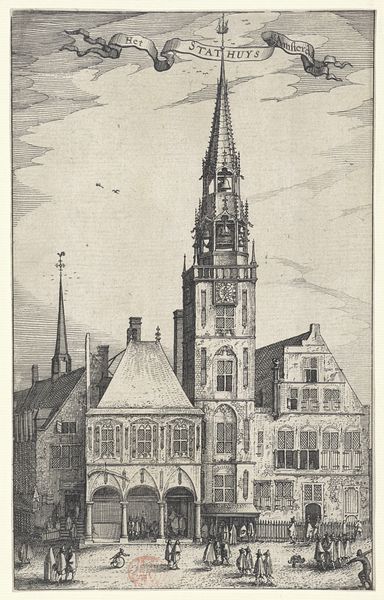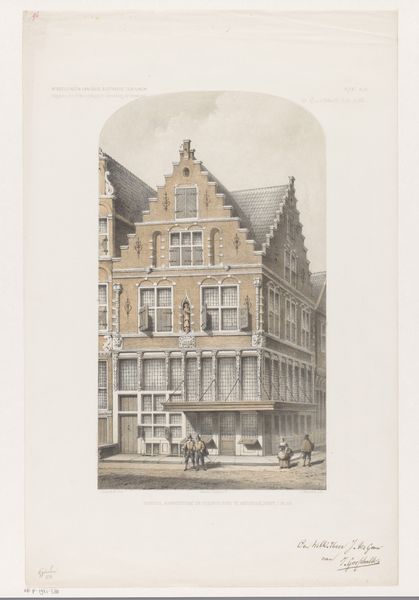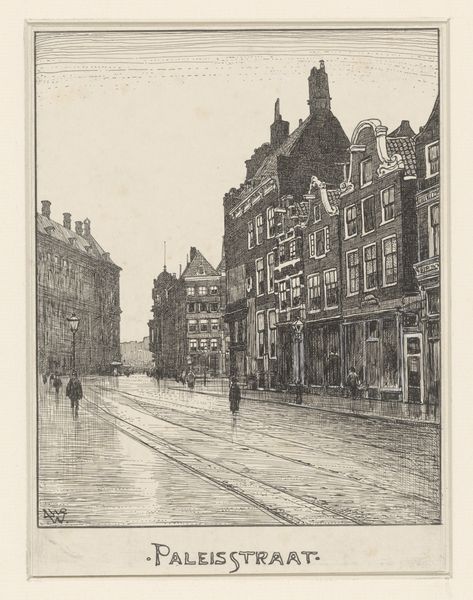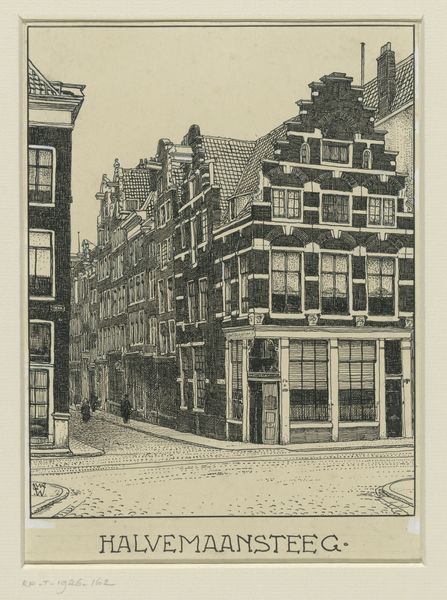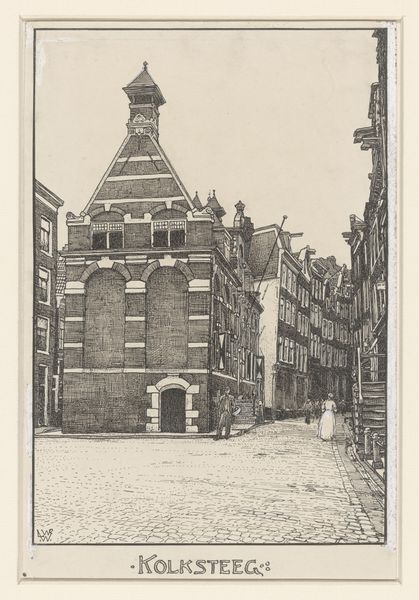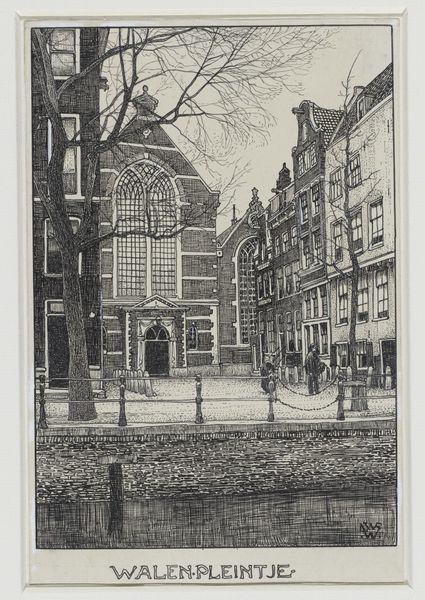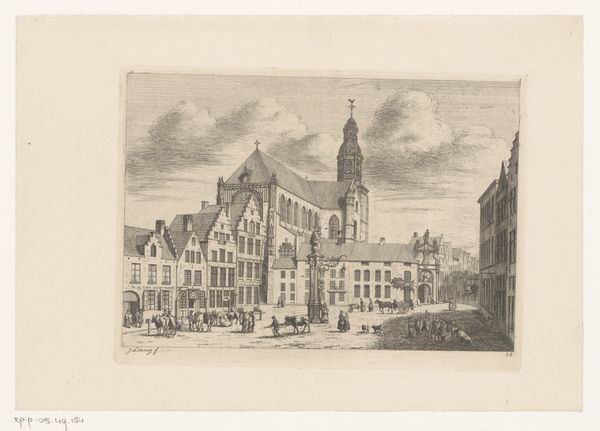
drawing, print, etching, paper, ink, engraving
#
drawing
# print
#
etching
#
paper
#
ink
#
cityscape
#
street
#
engraving
#
realism
Dimensions: height 183 mm, width 153 mm
Copyright: Rijks Museum: Open Domain
Editor: This etching by Willem Wenckebach, likely made between 1870 and 1926, titled "Nieuwe Zijds Voorburgwal te Amsterdam," showcases a classic Amsterdam cityscape. The precision of the lines capturing the buildings and the figures gives the artwork a realistic yet subdued character. What can you tell me about this piece? Curator: The date range is immediately interesting, indicating it was created during a period of rapid urban development and industrialization in Amsterdam. The choice to depict this specific canal street, with the Oude Kerk looming in the background, points to a fascination with the city's evolving identity. How do you see the artist’s perspective reflected in the social context of the time? Editor: Well, by choosing this view, Wenckebach might be subtly contrasting the traditional religious authority represented by the church with the modern commercial activity along the canal. It’s like a visual commentary on the shifting powers within Amsterdam's society. Curator: Precisely. Consider the public role of such images. Prints like these were often circulated widely, shaping perceptions of Amsterdam both within and beyond the city. Were they intended to celebrate progress, document change, or perhaps even critique the transformations underway? The medium itself, etching and engraving, made this image easily reproducible and accessible. What kind of audience do you imagine Wenckebach was trying to reach? Editor: Perhaps a middle-class audience interested in art and local scenes, a market for affordable prints that documented city life? So it's less about high art and more about engaging with the public. Curator: Indeed, think about the political implications embedded in everyday imagery like this. Visual representation of city streets wasn't just about aesthetic appeal; it was about constructing a narrative, framing urban experience, and reinforcing social hierarchies. Do you see any specific elements that hint at the socio-political dynamics? Editor: Maybe the depiction of people in different clothing suggests varied social classes coexisting, while the prominence of commercial buildings indicates a growing merchant class asserting their influence. It shows both realities together. I didn’t think of this image having any deeper significance! Curator: It's in understanding this relationship between art, its makers, and their surrounding context that we come to appreciate how artworks can reveal so much about a particular time and place. I found our conversation and different opinions helpful in interpreting this work of art. Editor: I agree completely, recognizing these elements really enriches the experience. Thanks!
Comments
No comments
Be the first to comment and join the conversation on the ultimate creative platform.
